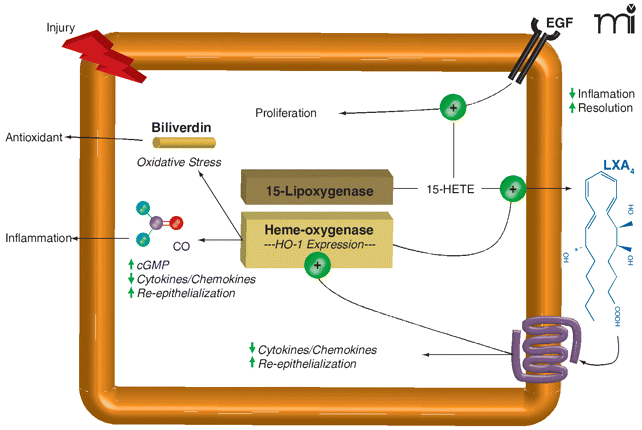
- Institution: Stanford Univ Med Ctr Lane Med Lib/Periodical Dept/Rm L109
- Sign In as Member / Individual
Lipid Autacoids in Inflammation and Injury Responses: A Matter of Privilege

Interaction of protective circuits in the privileged injury response. Lipoxygenase (15-LOX) and heme–oxygenase (HO) pathways operate in corneal epithelial cells to generate autacoids that act in both intracellular and extracellular capacities. Carbon monoxide and LXA4 attenuate the expression of epithelial-derived pro-inflammatory mediators. Biliverdin is a potent antioxidant, and 15-HETE serves as a second messenger for epithelial growth factor (EGF). The HO system promotes formation of LXA4 in the cornea, and activation of the LXA4 receptor in turn amplifies expression of HO-1. Released autacoids from both pathways limit leukocyte function (PMN). A potential positive feedback loop is thus elaborated to elevate anti-inflammatory and cytoprotective autacoids to control the precarious activation of the inflammatory response.


